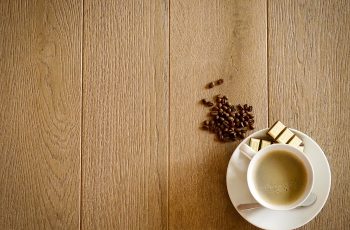Have you ever struggled to figure out how much coffee to use in your coffee maker? How to measure your coffee in the simplest, yet most effective way? We are all experts in some way, but what is the best way to get the most flavor and it’s actually quite simple as well.
How Many Ounces in a 12 Cup Coffee Maker?
One Tablespoon Per ‘Cup’
That sounds easy, doesn’t it? The problem is we don’t know what a “cup” is. In fluid ounces, a cup is equal to 8 oz. A coffee maker manufacturer’s cup will range between 4-6 fluid ounces. This further complicates matters. Now you know why your coffee isn’t consistent and is possibly driving you insane! You can use your coffee maker as a guide. You can count coffee cups by looking at the numbers on your coffee maker.
How Many Oz Are In a 12 Cup Coffee Maker?
A full 12 cup pot contains 60 ounces. If your cup is 8 ounces, then the pot will yield. In order to have a good tasting cup of coffee, you should use 7 or 8 grams per cup of water.
In most cases, a ‘cup’ of fluid measures 5 ounces, so adjust appropriately. To make a batch of 12 cups, 20 tablespoons of ground coffee would be needed. Generally, a coffee scoop measures 2 tablespoons.
What is the best amount of coffee to use for 12 cup pot?
That’s six cups for a full 12-cup pot and 12 tablespoons of coffee is 6 cups. Instead of counting out 12 tablespoons, just make a ¾ cup of coffee easily.
What Makes A Coffee Cup 6 oz?
While most automated drip coffeemakers use 6 fluid ounces to measure capacity, this is a teacup, not a coffee cup. This can be explained by the fact that coffeemakers that sport ‘12 cups’ sound more appealing than those with ‘9 cups’.
How Come a Cup Of Coffee Is Not Eight Oz?
It is possible that your morning cup of coffee isn’t tasting very good if you have been making it according to the 8-ounce amount. The ideal ratio of water to ground coffee is 6 fluid ounces to 1 tablespoon. In other words, one cup is equal to 250 ml, or 8.45 fluid ounces.
How Much Coffee Is Considered A Cup?
The volume of coffee in the cup matters more than the size of the cup. There are 8.25 g of roasted coffee beans in a regular cup and 150 ml of water.
What is The Amount Of Oz In A Cup Of Coffee?
Here is what you need to know. In most countries across the globe, the metric system specifies up to be 250 ml, or 8.45 fluid ounces, but the standard cup is 8 fluid ounces.
Now the question is what should I do To make 6 cups of coffee, how many tablespoons should I use?
Normally, a level scoop should hold around 2 teaspoons of coffee, or 0.36 oz or 10 grams. Use 2 teaspoons and a coffee scoop of ground coffee for every 6 ounces of water.
How many grams does a cup of ground coffee have? Now, let us discuss how many grams a cup should contain coffee in it! that is really simple!
For a cup, use 2 tablespoons or 7 grams per 6 oz of water. Fill up the filter halfway with coffee.
What do the lines on the coffee pot indicate?
Markings on the sides of the coffee pot show the number of servings. An average cup of coffee has a serving size of 5 ounces. Four cups equal 32 oz, or approximately six servings.
What Is The Appropriate Daily Amount Of Coffee?
Women can safely consume up to five cups of coffee a day with a caffeine limit of 400 mg. Each kind of coffee contains a different amount of caffeine, but the average 8 oz cup contains 95 mg.
What Is The Secret To making The Perfect Cup Of Coffee?
Cleaning your coffee maker is the first step toward preparing a nice cup of coffee so that old coffee residue will not affect the taste. Once you have cleaned your coffee maker, add 7-14 g of coffee grounds per cup. Run the grinds through a filter. Then, make your coffee with hot, clean water.
Conclusion
It is perfectly acceptable to add extra coffee if the recommended ratio seems a little light.
This is only intended to serve as a guide. You should remember that coffee is a science as well as an art. So, if you want, you may adjust the ratio. The point is that you should be able to appreciate the flavor without being restricted by the rules.


